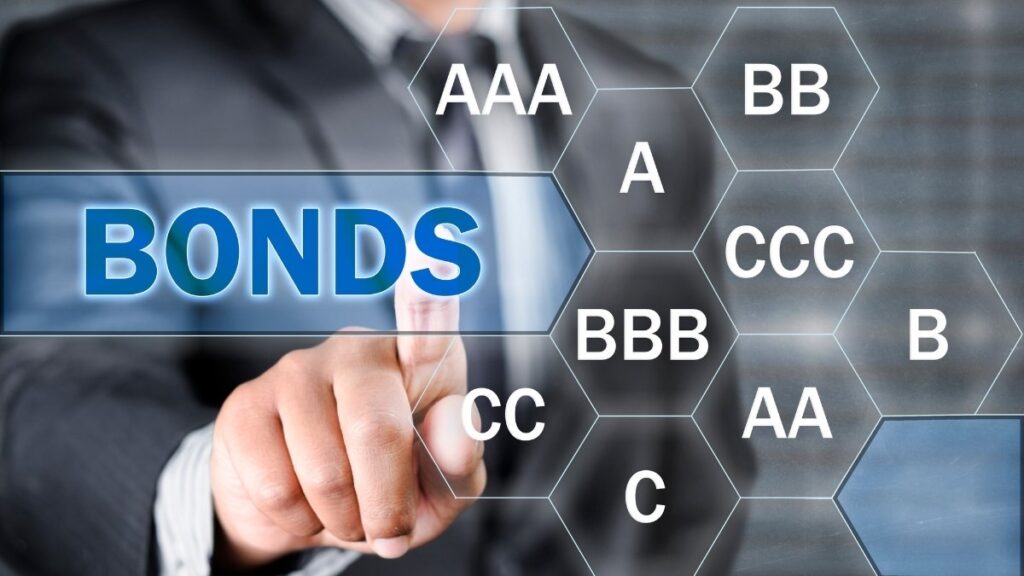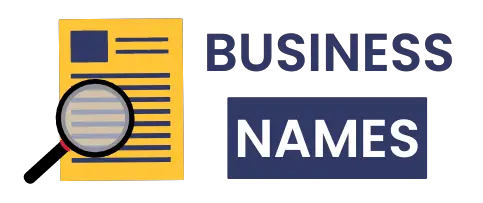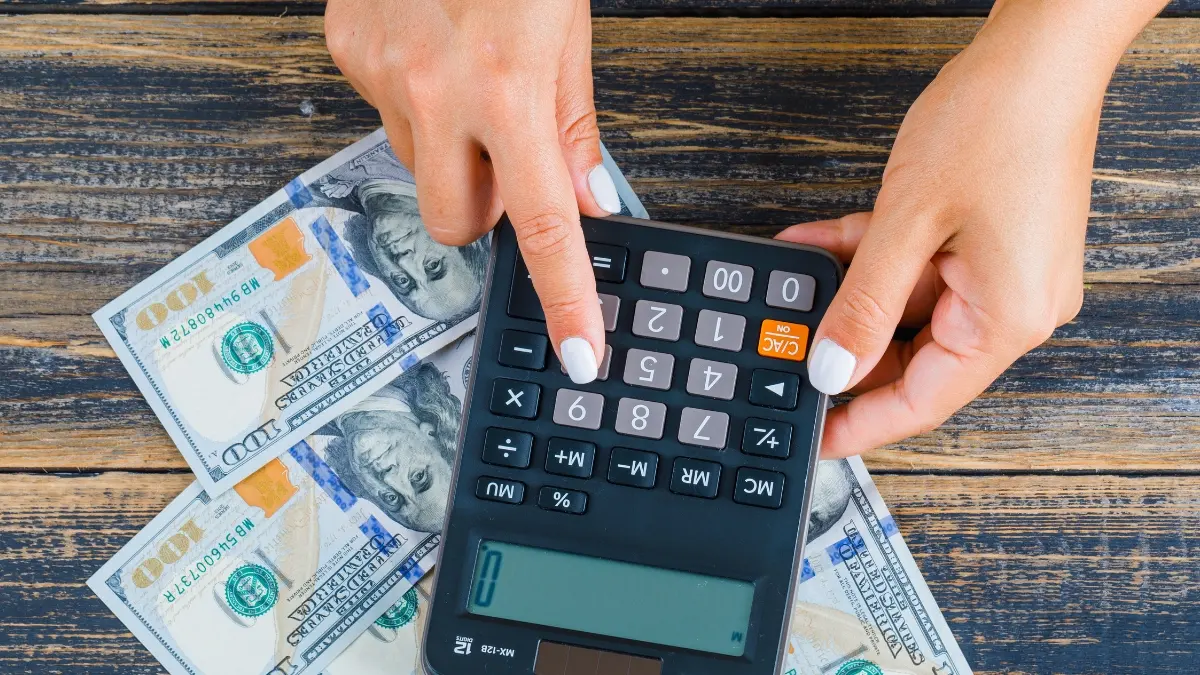If you think a 1% interest rate hike means your bond fund loses 1% of its value, you could be off by a factor of six. That isn’t a typo. For years, you’ve been told that bonds are the “safe” part of your portfolio.
But recently, you may have watched your bond funds lose value in a way that felt anything but safe. This happens to a lot of people, and it comes from a common misunderstanding of how bonds actually work.
The good news is there’s a single number that clears up all the confusion: bond duration.
This guide will explain bond duration in simple terms. By the time you’re done reading, you’ll know exactly how to find this number for your own investments and use it to see how much risk you’re really taking. This is a critical skill for anyone investing in the 2025 bond market.
Bond Math for Civilians
1% More Rates ≠ 1% More Pain. It’s Worse.
The Misconception Costing You Money
If interest rates go up by 1%, you might think your bond fund will lose 1% of its value. That makes sense, but it’s wrong. For many common bond investments, a 1% rate hike can cause a 6% loss, a six-fold error that catches many by surprise.
If you’ve watched your “safe” bond investments swing in value recently, you’ve seen this in action. This guide will show you the one number that explains this hidden risk: bond duration. By the end, you’ll know how to find it and use it to protect your portfolio in 2025.
What is Bond Duration? (It’s Not Time)
Think of duration as a lever. A small push on one end (an interest rate change) creates a much larger movement on the other end (your bond’s price). The longer the lever, the bigger the price swing. Duration, measured in years, tells you exactly how long that lever is.
The Rule of Thumb:
For every 1% change in interest rates, a bond’s price will move about 1% in the opposite direction for each year of its duration.
For example, the entire U.S. bond market, often tracked by funds like the Vanguard Total Bond Market ETF (BND), has a duration of about 6 years. This means if rates rise 1%, the fund is expected to lose about 6% of its value. This is a measure of price sensitivity, not just its maturity date.
How to Calculate the Real Impact
You can use a simple formula to see the potential effect on your investments. It shows the inverse relationship between rates and prices.
Let’s use a fund like BND with a duration of 6 years:
- If rates rise 0.50%: -1 × 6 × 0.005 = -3% price drop.
- If rates fall 1.00%: -1 × 6 × -0.01 = +6% price gain.
This chart shows the estimated price drop for different bond types if interest rates were to rise by 1%. The longer the duration, the greater the impact.
Actionable Steps for 2025
The market in 2025 presents both opportunities from high yields and risks from volatility. Don’t guess which way rates will go. Instead, prepare your portfolio.
Know Your Duration
Log into your brokerage account. Look for your bond fund’s “Portfolio Characteristics” or “Key Facts” page to find its effective duration.
Align Duration with Your Outlook
Think rates will fall? A higher duration can maximize gains.
Worried rates will rise? A shorter duration helps protect your principal.
Use Free Tools to Explore
Check out bond screeners on sites like Public.com, data from FINRA, or your own brokerage’s portfolio analysis tools to find investments that fit your strategy.
What is Bond Duration Explained in Simple Terms?

Think of bond duration as a lever. Interest rate changes are the force you apply to one end of the lever, and the change in your bond’s price is the movement at the other end. A longer lever (a higher duration) means even a small push from interest rates will cause a huge swing in your bond’s price.
Here’s the simple Rule of Thumb: For every 1% change in interest rates, a bond’s price will move in the opposite direction by about 1% for each year of its duration.
This is the most important takeaway. A bond with a duration of six years will lose about 6% of its value if interest rates rise by 1%. It will gain about 6% if rates fall by 1%.
It’s critical to know that while duration is measured in years, it’s not the same as a bond’s maturity date. Duration is a measure of price sensitivity. It’s a calculated number that rolls up a bond’s maturity, coupon (interest) payments, and current yield into one simple figure that tells you how much its price will likely move.
Let’s make this real. The Bloomberg US Aggregate Bond Index is a benchmark for the entire U.S. bond market, and its duration is currently about 6 years. This means a surprise 1% rate hike could cause the broad bond market to fall by roughly 6%.
Many popular ETFs that millions of people own, like the Vanguard Total Bond Market ETF (BND) and the iShares Core U.S. Aggregate Bond ETF (AGG), track this index and have similar durations of around 5.8 to 6.3 years. This isn’t just theory; it’s a direct look at the risk inside many retirement accounts.
How to Calculate Bond Price Changes Using Duration

Now you know the rule, let’s look at the simple math behind it. This formula gives you the power to estimate the impact of rate changes on your own funds.
The negative sign is there because when interest rates go up, bond prices go down, and vice-versa.
Let’s walk through an example using a fund like BND, which has a duration of about 5.8 years.
- Scenario 1 (Rates Rise 0.50%): The math is -1 × 5.8 × 0.005. This gives you an estimated price drop of 2.9%. You can see how even a small rate increase can cause a noticeable loss.
- Scenario 2 (Rates Fall 1.00%): The math is -1 × 5.8 × -0.01. This gives you an estimated price gain of 5.8%, showing the potential for real growth if rates decline.
This relationship is what creates different levels of risk across the bond market. The table below shows how this plays out with different types of funds.
| Bond/Fund Example | Duration (in Years) | Estimated Price Change if Rates Rise 1% | Estimated Price Change if Rates Fall 1% |
| Short-Term Bond Fund | 2 Years | -2.0% | +2.0% |
| Aggregate US Bond Fund (e.g., BND/AGG) | ~6 Years | -6.0% | +6.0% |
| Long-Term Treasury Fund | 15 Years | -15.0% | +15.0% |
To round out your knowledge, here is a quick cheat sheet on the factors that change a bond’s duration.
- Maturity: A longer time to maturity means a higher duration.
- Coupon Rate: A lower coupon (interest) rate means a higher duration.
- Yield: A lower starting yield means a higher duration.
Beyond Duration: A Quick Look at Convexity

Here’s a pro tip: duration is a great estimate, but the real relationship between a bond’s price and its yield isn’t a perfectly straight line—it’s curved. This curve is called convexity, and for most bonds, it’s a good thing for you as an investor.
Positive convexity means that when rates change, the actual price move is a little better than what duration alone predicts.
Here are two simple rules for how it helps you:
- When rates rise: A bond with positive convexity will lose slightly less than its duration suggests.
- When rates fall: The same bond will gain slightly more than its duration suggests.
This is the “or Better” part of the story. It means that in a best-case scenario for 2025 where rates fall significantly, your gains could be even larger than the simple duration math shows. You don’t need to calculate convexity, but it’s good to know it’s there, providing a small cushion against losses and a small boost to gains.
Actionable Steps for Bond Investing in 2025

So, what should you do with this information? The bond market in 2025 presents both an opportunity and a risk.
On one hand, some experts say, “With yields hitting levels not seen in years and interest rate cuts on the horizon, 2025 could be the year bonds deliver both the income you need and the growth you want”. High starting yields and the chance for prices to rise make a strong case for bonds.
On the other hand, some analysts are cautious. One notes, “It’s almost impossible to see a repeat of 2024’s credit performance because we haven’t started a year with spreads this tight in ages, if ever”. Stretched valuations and the risk of inflation could keep things volatile.
Your personal strategy should depend on your goals and risk tolerance. Here are three steps to take now.
1. What Type of Bond Is Right for You in 2025?

After you learn about duration, the next question is simple: which kind of bond should you actually buy? Different bonds have different levels of risk and reward. Picking the right one depends on your goals, whether you want safety, income, or tax savings.
Here’s a breakdown of the main types of bonds for a regular investor.
U.S. Treasury Bonds (“Treasurys”)
- Risk Level: Lowest. These are backed by the U.S. government, so the risk of not getting paid back is extremely low.
- Typical Yield: Lowest. Because they are so safe, they usually pay less interest than other bonds.
- Tax Benefits: The interest you earn is exempt from state and local taxes, but you still have to pay federal taxes.
- Who It’s Best For: Conservative investors who want to keep their money as safe as possible.
Municipal Bonds (“Munis”)
- Risk Level: Low to moderate. These are issued by states, cities, or counties. The risk of default is low but slightly higher than with Treasurys.
- Typical Yield: Low to moderate. Their yields are often a bit higher than Treasurys.
- Tax Benefits: This is their main selling point. The interest is usually exempt from federal taxes. If you buy a muni issued by your own state, it’s often free from state and local taxes, too.
- Who It’s Best For: Investors in high tax brackets, because the tax savings can make the real return much more attractive.
Corporate Bonds
- Risk Level: Varies. These are issued by companies. “Investment-grade” corporate bonds from stable companies are moderately risky. “High-yield” bonds (also called “junk bonds”) from less stable companies are much riskier.
- Typical Yield: Varies. Investment-grade bonds pay a moderate yield. High-yield bonds pay the highest yields to compensate you for the extra risk.
- Tax Benefits: None. You pay federal, state, and local taxes on the interest you earn.
- Who It’s Best For: Investors who are focused on generating income and are comfortable taking on more risk to get a higher yield.1
2. Bond Funds vs. Individual Bonds: Which Is Better?

When you decide to invest in bonds, you have two main choices: buy a bond fund (like an ETF) or buy individual bonds. They seem similar, but they work very differently when it comes to risk.
Bond Funds (ETFs)
A bond fund is a collection of hundreds or thousands of bonds bundled together.
The Good: They are incredibly easy. With one purchase, you get instant diversification across many different bonds. This spreads out your risk so that if one company has a problem, it doesn’t sink your whole investment.
The Bad: A bond fund never “matures.” The fund manager is always buying and selling bonds, so the fund’s duration stays relatively constant. This means you are always exposed to interest rate risk. If rates go up, the fund’s price will go down, and there’s no end date when you’re guaranteed to get your principal back.
Individual Bonds
This means you buy a bond directly from a single issuer, like a company or the government.
The Good: You know exactly when you’ll get your money back. If you hold an individual bond until its maturity date, you get your original investment back (unless the issuer defaults). This completely removes the price risk from changing interest rates.
The Bad: It’s a lot more work. To be properly diversified, you would need to research and buy many different individual bonds, which can be difficult and time-consuming for most people.
The Bottom Line: If you want simplicity and instant diversification, a bond fund is a great choice. If your main goal is to preserve your capital and you want to avoid price swings from interest rates, holding individual bonds to maturity is the better option.
3. How Do You Actually Get Paid? A Guide to Bond Yields

The main reason to own bonds is for the income they provide. But when you look at a bond fund on a brokerage website, you might see several different “yield” numbers. It can be confusing. Here’s a simple guide to what they mean and which ones matter most.
Coupon Rate: This is the fixed interest rate that the bond promises to pay when it’s first issued. For example, a $1,000 bond with a 4% coupon pays $40 per year. This number never changes.
Yield to Maturity (YTM): This is the most important number for understanding your total return. It’s an estimate of the total annual return you’ll get if you buy the bond today and hold it until it matures. It includes both the coupon payments and any gain or loss in the bond’s price.
30-Day SEC Yield: This is a standardized number specifically for bond funds. It shows what the fund has earned in interest over the last 30 days, minus expenses. It gives you the best snapshot of the income the fund is generating right now.
Why are they different?
A bond’s price changes over time. If you buy a bond for less than its face value (at a discount), your YTM will be higher than the coupon rate. If you buy it for more (at a premium), your YTM will be lower.
Which one should you look at? For an individual bond, focus on the Yield to Maturity. For a bond fund or ETF, the 30-Day SEC Yield is the most useful number for comparing income potential.
4. How to Build a Bond Ladder to Reduce Risk

A bond ladder is a simple but powerful strategy to manage interest rate risk while still earning a steady income. It helps you avoid having all your money locked into one interest rate for a long time. Here’s how to build one.
The idea is to own several individual bonds that mature on different dates.
Step 1: Stagger Your Maturities. Buy several bonds that mature in different years. For example, you could buy a 1-year bond, a 2-year bond, a 3-year bond, a 4-year bond, and a 5-year bond.
Step 2: Collect Your Principal. Next year, your 1-year bond will mature, and you’ll get your original investment back. You will have collected interest payments along the way.
Step 3: Reinvest at the End of the Ladder.Take the money you just got back and use it to buy a new 5-year bond. Now your ladder still has “rungs” at 1, 2, 3, 4, and 5 years.
Why does this work?
This process gives you flexibility. If interest rates have gone up, you get to reinvest your money at the new, higher rates. If rates have gone down, you still have your other bonds locked in at the old, higher rates.
A bond ladder gives you regular access to your cash and helps average out the effects of interest rate changes over time.
5. The 3 Bond Risks That Aren’t Interest Rates

Interest rate risk (duration) gets all the attention, but it’s not the only way you can lose money with bonds. It’s important to know about the other risks before you invest.
Credit Risk (or Default Risk)This is the risk that the company or government that issued the bond can’t pay you back.5 If the issuer goes bankrupt, you could lose your entire investment.
To help you measure this, rating agencies give bonds grades like “AAA” (very safe) or “BBB” (investment grade).6 Anything lower is considered a “junk bond,” which has a much higher risk of default. U.S. government bonds have the lowest credit risk.
Inflation RiskThis is the risk that the cost of living rises faster than the interest payments you receive.6 A bond might pay you a 4% coupon, but if inflation is 5%, your money is actually losing purchasing power over time. This is a bigger problem for long-term bonds, as there’s more time for inflation to eat away at your returns.
Liquidity RiskThis is the risk that you can’t sell your bond quickly when you want to.
If you need cash and try to sell a bond that isn’t traded very often (like some municipal or corporate bonds), you might have to accept a much lower price to find a buyer. This is less of a problem for U.S. Treasury bonds and major bond ETFs, which are traded every day.
Conclusion
The key to your bond investments isn’t about predicting where interest rates will go next. It’s about knowing how sensitive your portfolio is to those changes right now.
The impact of interest rate moves is amplified by a bond’s duration, a number that is often much larger than one. Managing this risk gives you control.
So here’s your final call to action: log into your brokerage account, find the duration of your bond funds, and apply the simple math from this guide. This one small step will give you a clearer picture of your investments and help you make smarter decisions for 2025.
Now that you have bond duration explained, you are in a much better position to succeed.

